Worried about the decline in attendance rates, teachers at schools in Tu Mo Rong district ( Kon Tum ) decided to join forces, mobilize parents and donors to cook lunch for students at school to keep them studying in the afternoon.
Previous article: Overcoming rocky slopes, sowing knowledge in the Northern Central Highlands (Part 1): Teachers contribute their salaries to build shelters for poor students
Teachers spend their own money to cook rice to keep poor students
From early morning, student A Trung (Kon Ling village, Dak Ha commune, Tu Mo Rong district) and his friends crossed the mountain, happily carrying a lunch box filled with white rice to Ty Tu school (Dak Ha Primary School, Tu Mo Rong district). A Trung and his friends knew that, although they were not entitled to the boarding regime according to regulations, they could still stay at school for lunch at noon to continue studying in the afternoon.
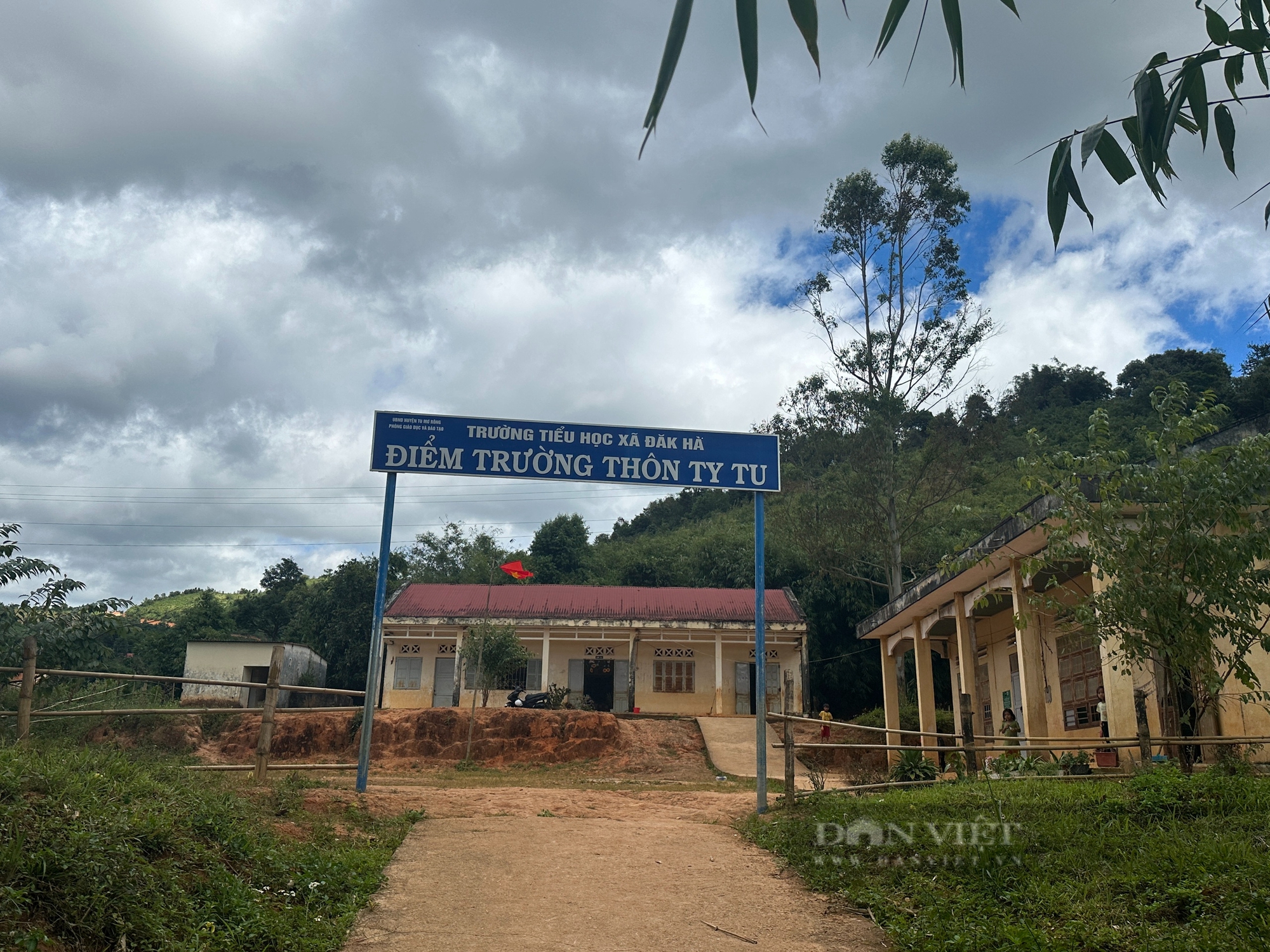
Ty Tu village school is located on the mountainside.
In previous years, A Trung’s brothers and sisters who studied at Ty Tu school only brought white rice from home and had the teachers cook and bring it to school. Hot bowls of vegetable soup and meals with meat provided the children with enough nutrients and strength to continue studying in the afternoon.
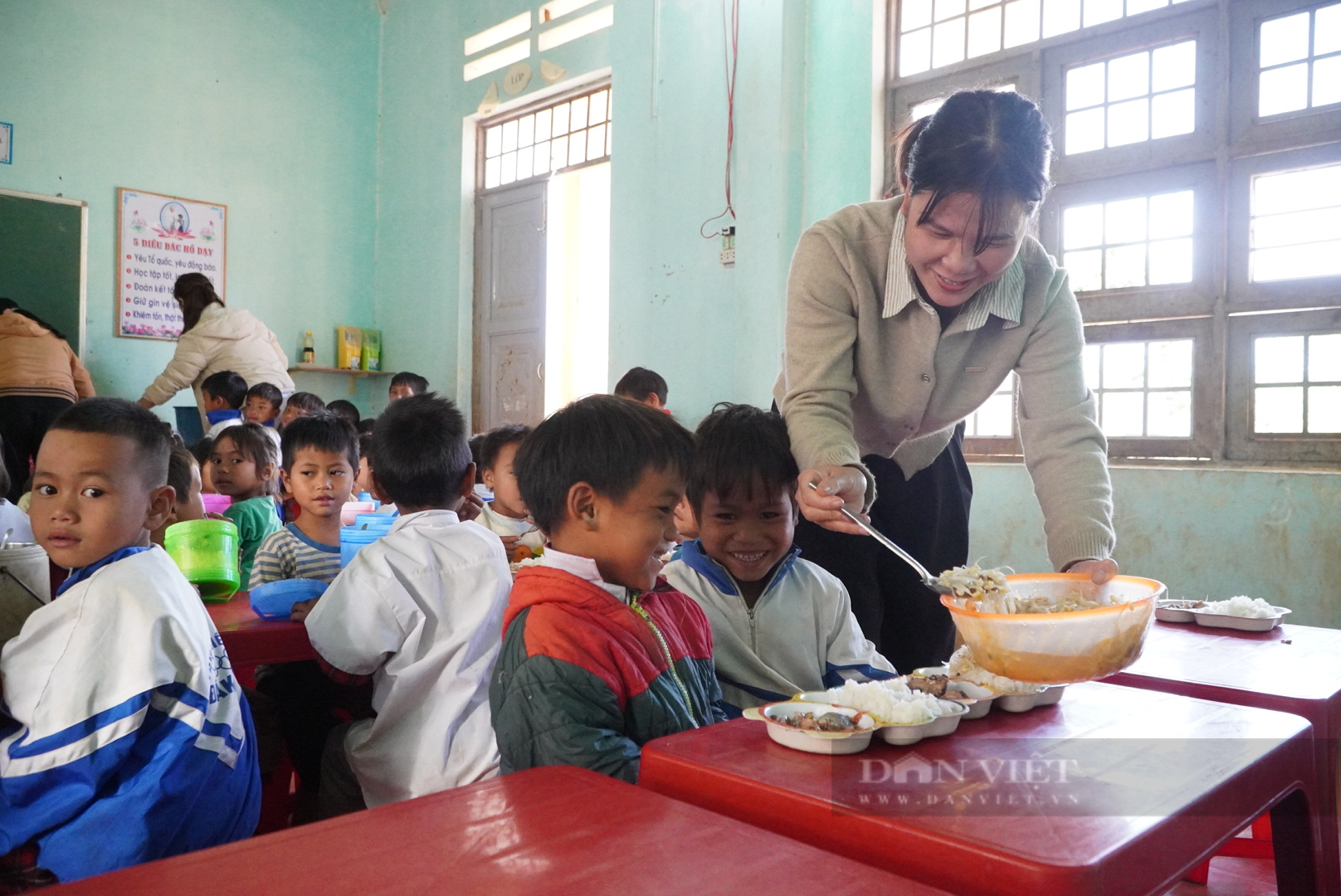
The teachers at Ty Tu village school take care of lunch for the students.
Ms. Ho Thi Thuy Van, Principal of the school, said that implementing the 2018 GeneralEducation Program, primary school students study 2 sessions/day. However, students at village schools, due to the distance from home to school being less than 4km, are not entitled to the regime according to Decree 116/2016/ND-CP dated July 18, 2016 of the Government on regulations on support policies for students and primary schools in communes and villages with special difficulties.
Therefore, students often return home to eat lunch after studying in the morning and then continue studying in the afternoon, or bring lunch to school. This causes many difficulties in maintaining attendance and nutrition for them.
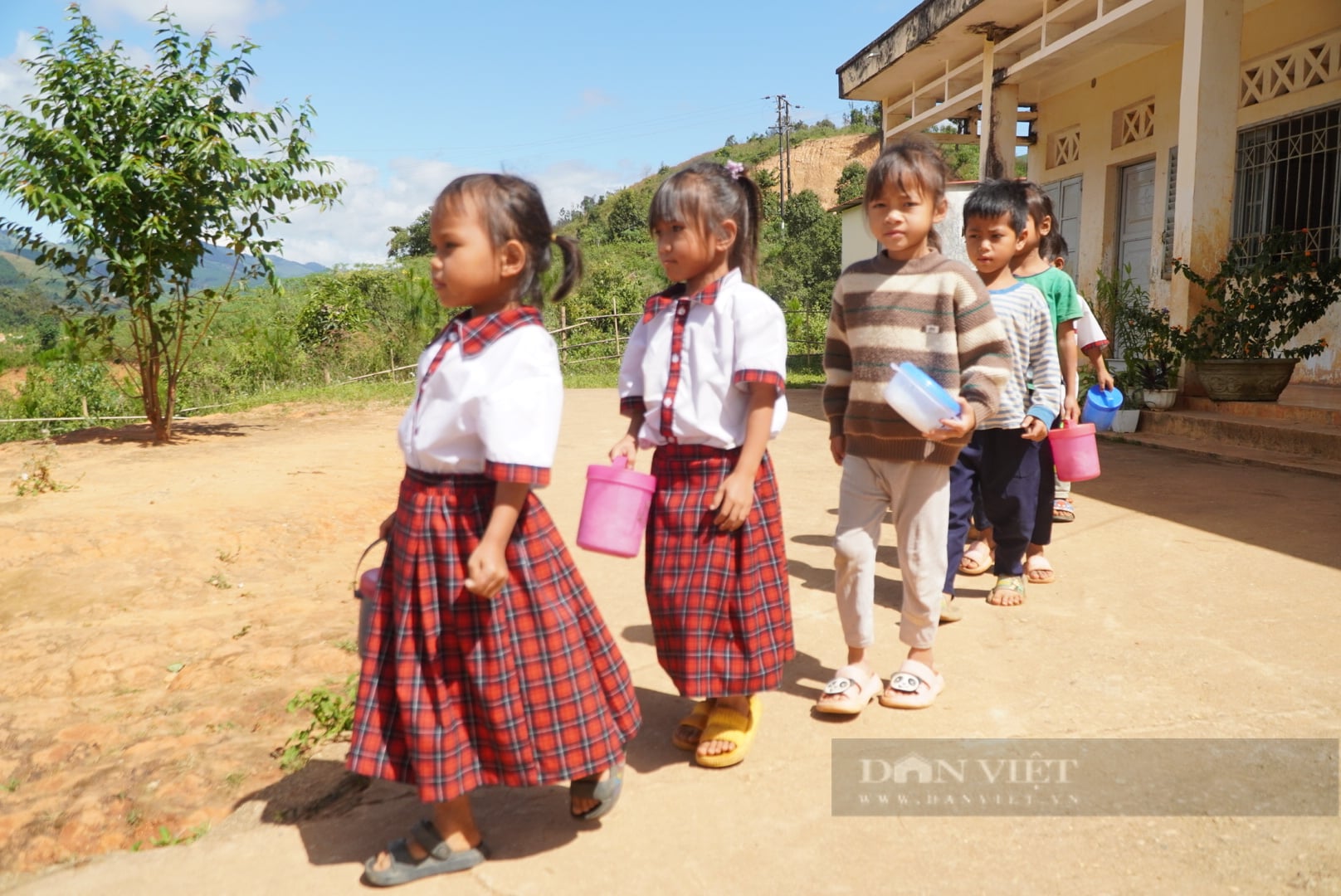
Students of Ty Tu school bring lunch boxes to the dining room.
At the beginning of the 2020-2021 school year, seeing a decrease in afternoon attendance, the school decided to establish a boarding school model at a Ty Tu school. At first, having money to provide food for about 60 students for a long time was a very difficult problem.
When the school was first established, each teacher and staff member contributed 100,000 VND per month to provide food for the students. However, later, seeing that all the teachers were facing difficulties, the school had to find other ways. At this time, the school decided to raise livestock and grow vegetables, then sell them to buy food for the students. At the same time, it encouraged parents to participate in the implementation.
5 years with the people to raise poor students
When parents heard that the school was implementing a boarding model, they were very happy and agreed to support it. Before the students come to school, parents will prepare meals for their children to bring. The school will take care of food and accommodation for the children.
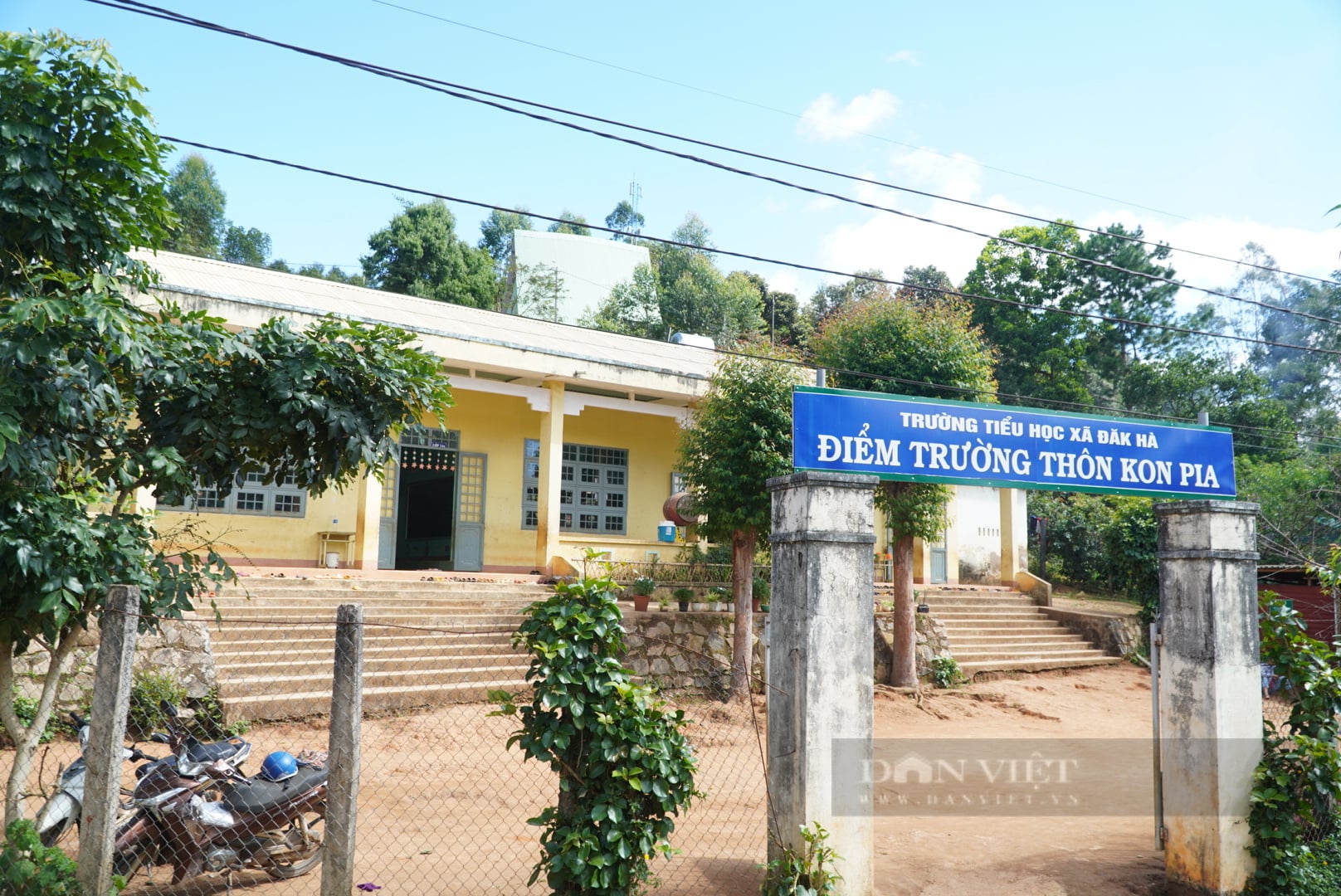
Kon Pia village school is located precariously on the hillside.
Taking advantage of the vacant land behind the school, the school fenced it off, using old pieces of corrugated iron to create pig and duck pens. From the money raised from donors, the school started buying piglets, chickens, and ducks to raise, the main food being leftovers from the students. Along with that, the school grew vegetables to serve meals for teachers and students in the school.
Ms. Van said: "Each time, the school raises about 7 to 10 pigs and dozens of chickens and ducks. We will use part of the money from the sale to buy new breeds, and the rest will be used to cook with the meals of the students who are entitled to the regime. After cooking, the school will send teachers to bring the food to the school and divide it among the students.
Along with that, the school also does not forget to bring rice to prevent students from bringing rice or bringing little or not enough to eat. Students do not eat much food, just need to know how to calculate and share to be able to take care of meals for students.
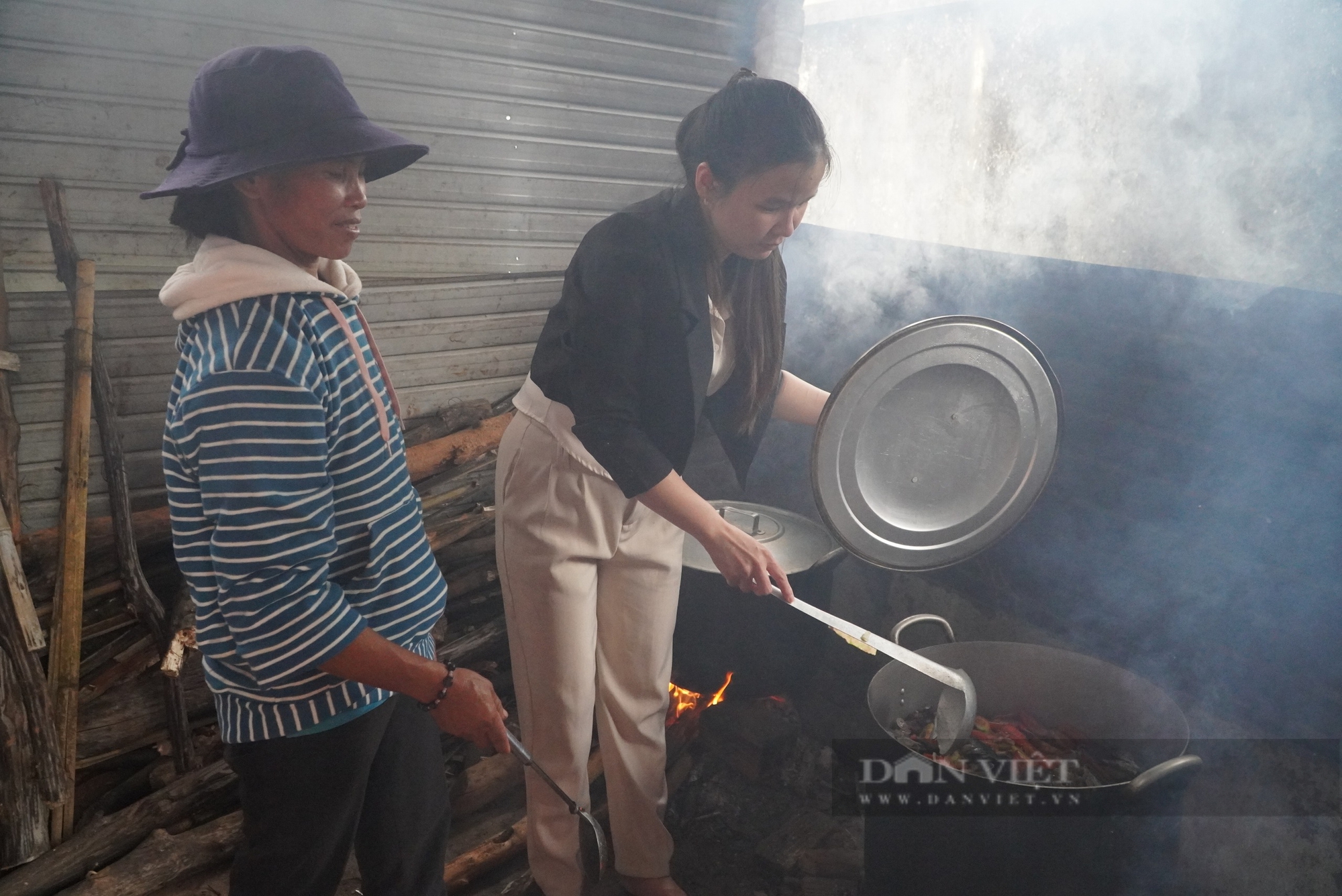
Ms. Le Thi My Hanh (right) guides parents in cooking.
After a period of operation, seeing the effectiveness of the model, at the beginning of the 2024-2025 school year, in addition to providing meals for 56 students at Ty Tu school, the school decided to replicate the model in Kon Pia village.
At this school, the school has set up a temporary kitchen to encourage parents to come and cook under the guidance of teachers.
We arrived in Kon Pia village in mid-November. The school is perched precariously on a hillside, with clean, spacious classrooms bustling with the sounds of teachers and students studying. Under the corrugated iron roofs, parents are busy cooking delicious meals for their children and grandchildren in Kon Pia village.
While carrying her child and blowing on the fire, Mrs. Y Theo excitedly said: "I have a child studying in grade 2 at this school. Since the beginning of the school year, my child has had lunch at school every day. We only prepare white rice for him, the school provides the rest of the food. I, as well as other parents in the village, will take turns coming here to cook for the children. After eating, my child will stay at school to take a nap. Thanks to that, the children no longer have to miss school in the afternoon like before."
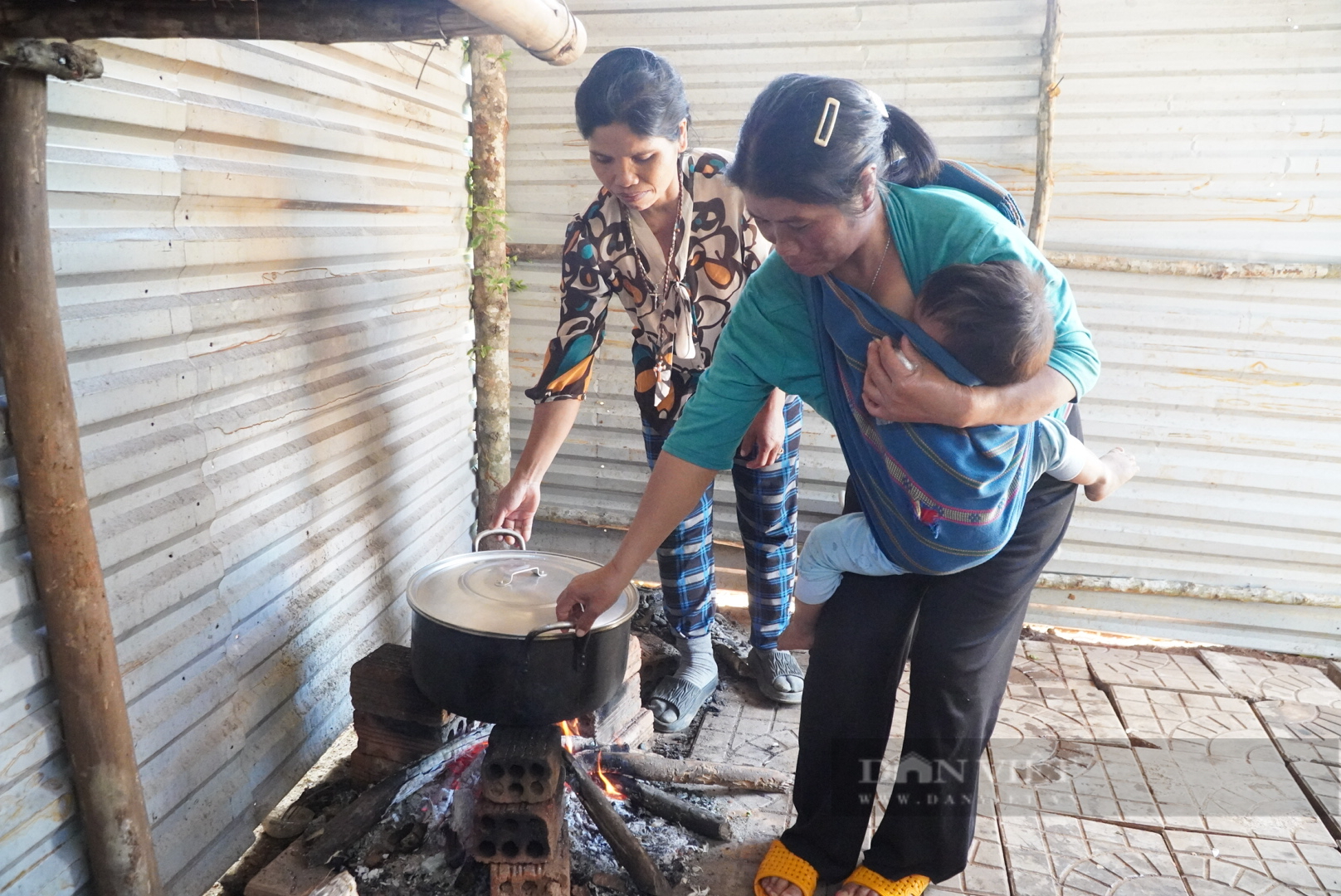
Mrs. Y Theo carries her baby while cooking food for students at Kon Pia village school, Dak Ha Primary School.
Ms. Ho Thi Thuy Van, the school principal, said that at Kon Pia village school, there are 87 students participating in the boarding model. In addition, the school also supports boarding meals for 45 students at the main school. Currently, the whole school has 188 students who do not enjoy the boarding policy but still eat and take a nap at school after finishing their morning classes. Thanks to that, the attendance rate has improved significantly, with more than 95% of students coming to school in the afternoon.
8,500 VND meals
Not only Dak Ha Primary School, Dak To Kan Secondary School has also implemented a boarding model for residents for more than 2 years. Recalling the first days of implementation in the 2022-2023 school year, Mr. Hoang Van Hai, Principal of the school confided: "When I first started working at the school, I saw that students often missed school in the afternoon, some days more than 50% missed school, and the school was worried that if this situation continued, it would affect learning outcomes."

A meal at the village school of Dak To Kan Secondary School.
Without hesitation, Mr. Hai wrote an open letter calling on donors to join hands to take care of lunch for the children. Many individuals and organizations have donated rice, bicycles, scholarships, etc., but that is still not the result the school wants, because the goal is to provide daily meals for the children.
Luck also smiled when Mr. Hai connected with the "Feeding Children Project - Volunteer Faith Group" of the National Volunteer Center, from here, it sowed more faith in teachers and students about free lunches.
After completing the procedures, by November 2022, 267 students who were not entitled to boarding benefits were supported with lunch worth 8,500 VND/meal.
"8,500 VND is not a large amount of money but it is very valuable for students in disadvantaged areas, so the school has to calculate carefully to cook a quality meal, ensuring nutrition for the students here," Mr. Hai shared.
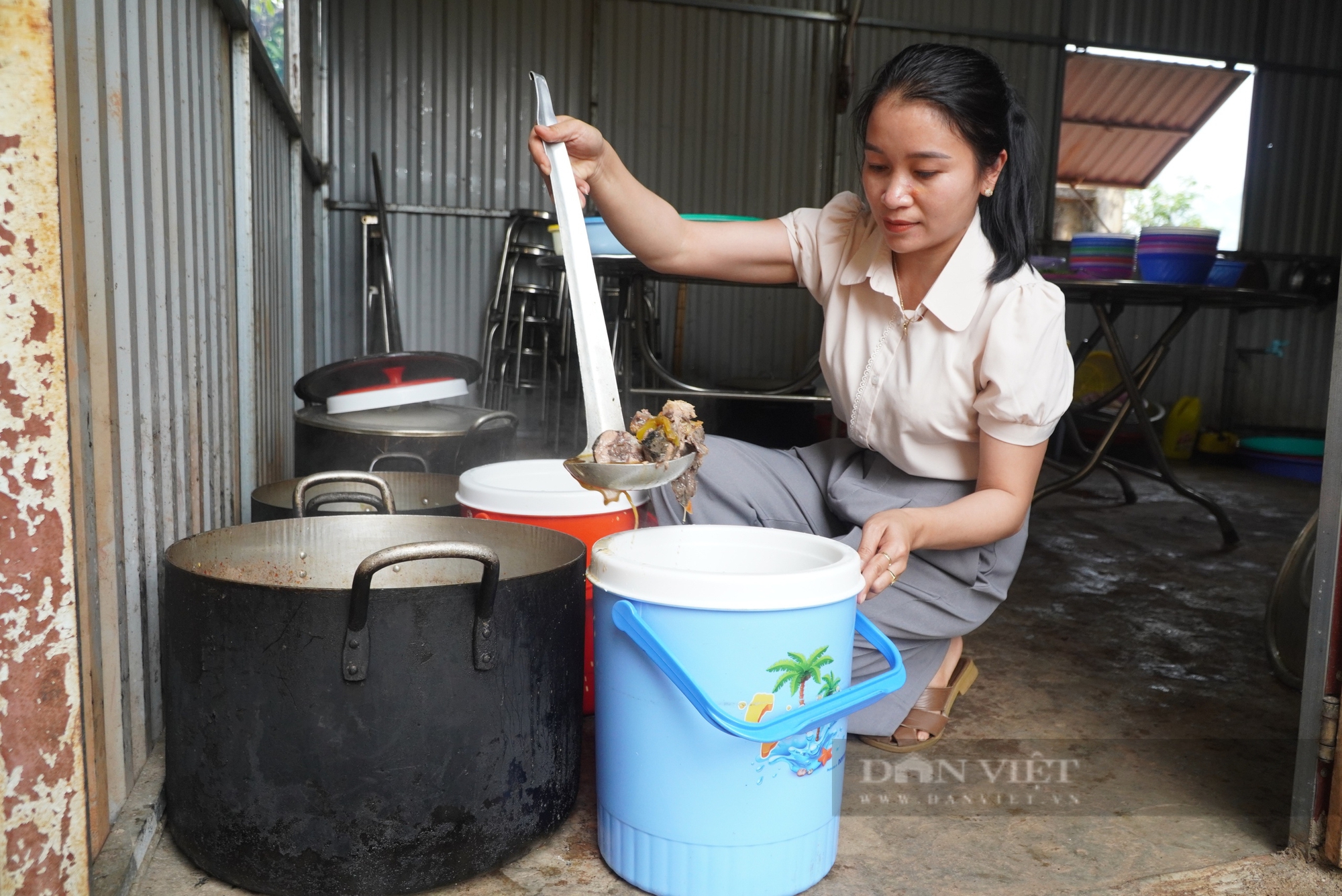
Teachers and parents participate in cooking at Dak To Kan Primary and Secondary School.
In the first year of implementation, parents did not respond, so all teachers and staff in the school had to take turns cooking. After cooking, teachers would take turns transporting food to the village schools, then distributing it to each child to eat in class.
"At the end of the first school year, the students' attendance rate in the afternoon improved significantly, from about 50% to 90% of students attending class, which made parents trust and volunteer to join the school in the next school year," said Mr. Hai.
In the 2023-2024 school year, the children who receive free meals are even more excited when their mothers participate in cooking at school. Under the guidance of teachers, parents are assigned to become chefs. And just like that, the agreement of parents and the efforts of the school have brought quality lunches to Xo Dang students, helping them not have to cross mountains and brave the rain to return home at noon like in previous years.
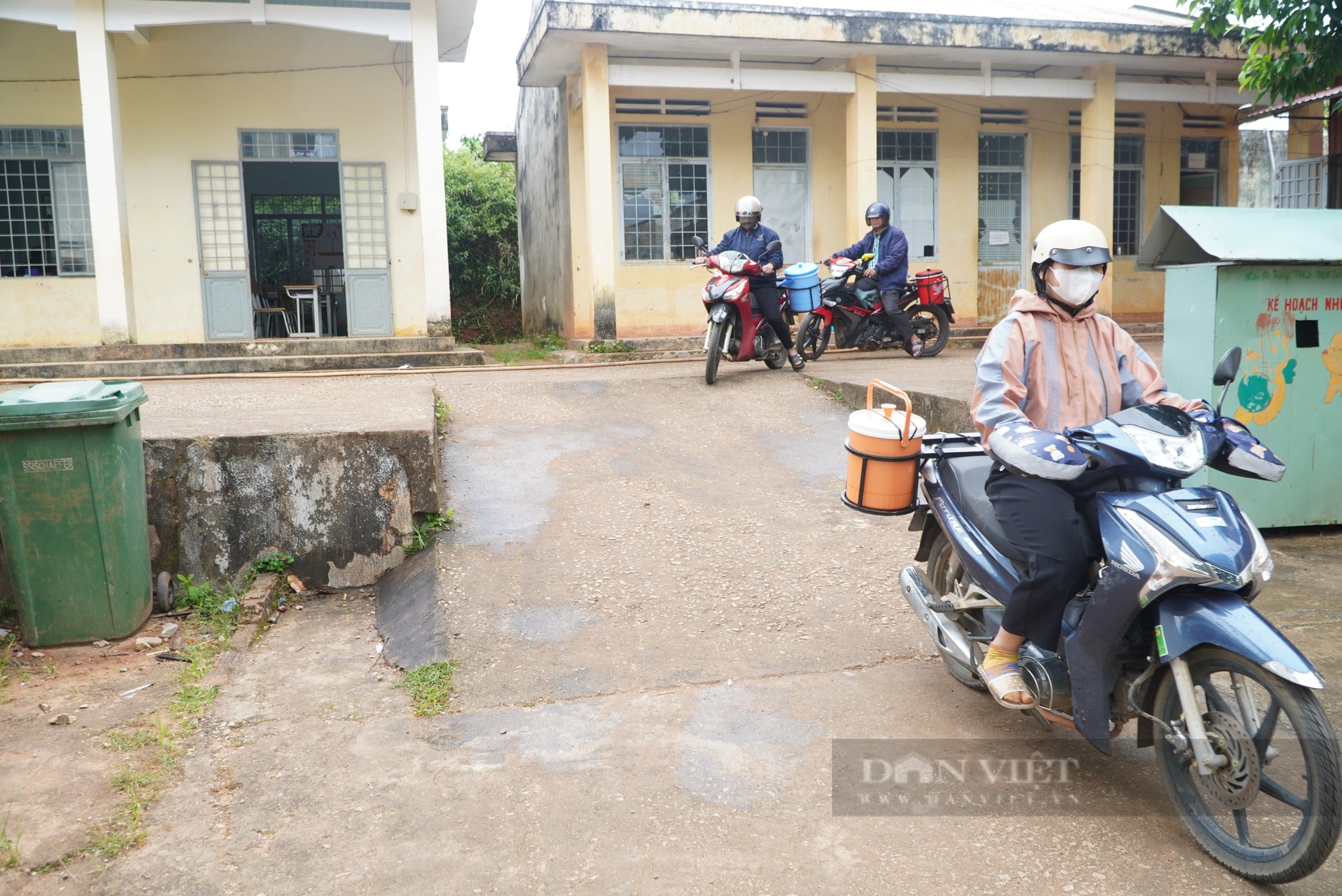
Teachers of Dak To Kan Secondary School transport food to schools.
Ms. Le Thi My Hanh, equipment staff, in charge of the "Children's Feeding Project" said that when the project was first implemented, although it was hard, in return for smiles and progress in the students' studies, the teachers here were also happy. Now, the project has been operating effectively and systematically with the participation and contribution of parents. Seeing students studying, playing, and eating well is the greatest happiness for teachers in the highlands.
Mr. Hoang Van Hai, the school's principal, said that in the 2024-2025 school year, the school has 970 students, of which only 104 students are eligible for boarding meals. The school is currently providing free meals for 577 students who are not eligible. Students only need to bring white rice from home to school. If many students are in difficulty, the school will support them with meals.
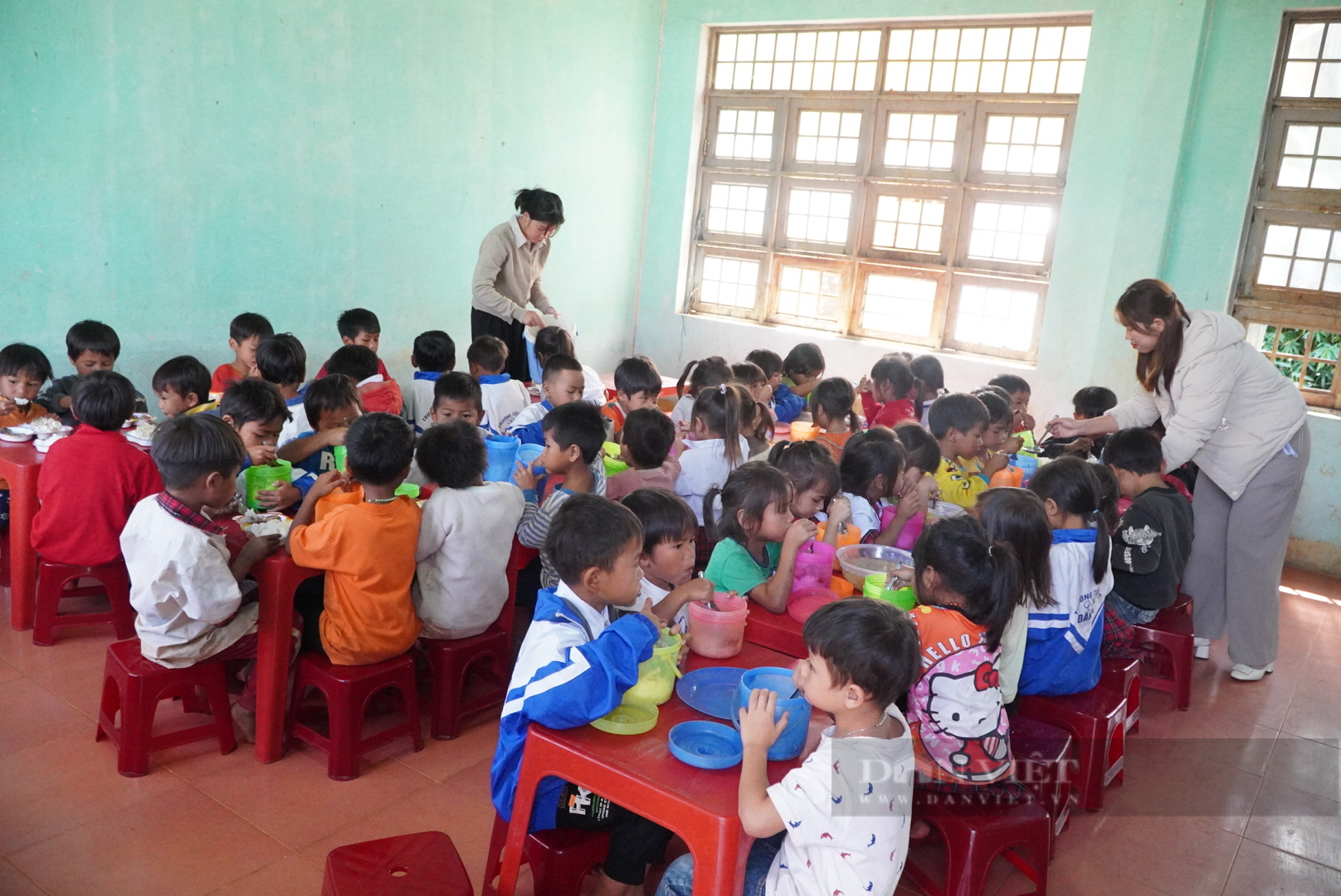
Thanks to the boarding school model, children at the village school can eat and sleep at noon to be ready to continue studying in the afternoon.
Mr. Le Van Hoang, Head of the Department of Education and Training of Tu Mo Rong district, said that the mobilization and joint efforts of schools to organize free meals for students who are not eligible for boarding school according to regulations has increased the afternoon attendance rate to more than 95%.
Currently, 23 schools in the district are completing documents to send to the "Fund for poor students in mountainous areas". This unit has worked with the district and will support 10,000 VND/meal for 2,085 students in the area. To be able to maintain this meal, all teachers and parents must join hands, be unanimous, and coordinate to cook a meal with meat for students in difficult areas.
Source: https://danviet.vn/vuot-doc-da-gioi-con-chu-tren-vung-bac-tay-nguyenbai-2-giao-vien-bo-cong-gop-suc-niu-chan-tro-ngheo-20241117125151107.htm








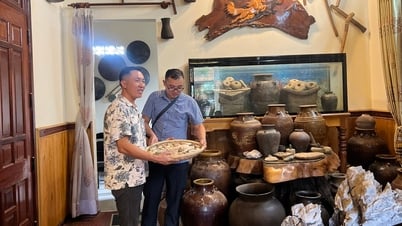



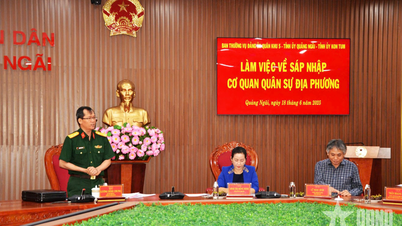








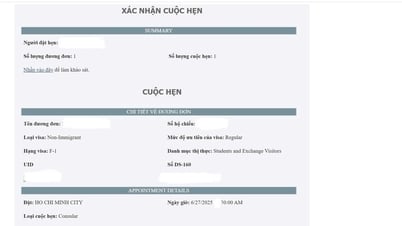


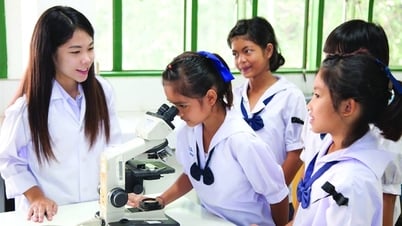











![[Photo] The 9th Congress of the Party Committee of the Office of the President, term 2025-2030](https://vphoto.vietnam.vn/thumb/1200x675/vietnam/resource/IMAGE/2025/6/20/78e7f27e8c4b4edc8859f09572409ad3)

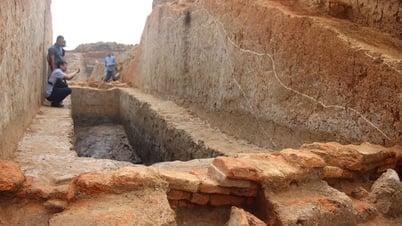




















![[Maritime News] Wan Hai Lines invests $150 million to buy 48,000 containers](https://vphoto.vietnam.vn/thumb/402x226/vietnam/resource/IMAGE/2025/6/20/c945a62aff624b4bb5c25e67e9bcc1cb)















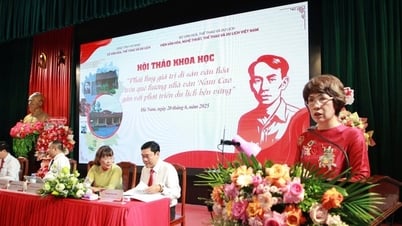




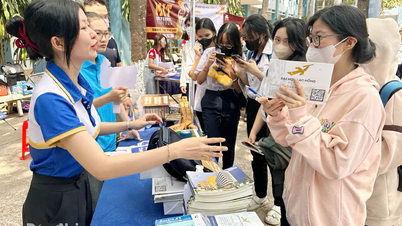






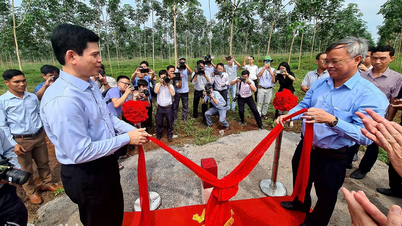
















Comment (0)